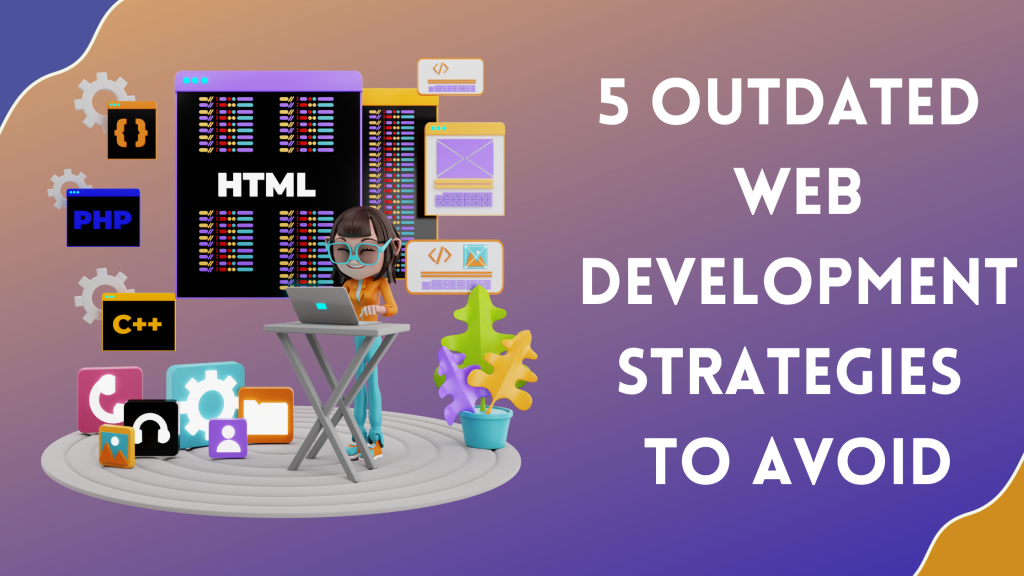Web development is one area that’s been ever-evolving with time. With more and more devices connecting to the internet regularly, and the various sorts of gadgets evolving, the internet is unquestionably expanding. Web development was formerly only associated with the creation of intranet and internet web pages and websites. It was once limited to text-based sites, and now it has moved on to include single-page applications, progressive web apps, mobile apps, and even more complex applications.
The rise of Flash paved the path for technologies such as JavaScript, then jQuery, React, and Angular. HTML5 is the latest version of HTML. CSS3, XML, PHP, and a slew of other technologies are now available. Piotr Staniow, a senior software engineer at HubSpot said, “Developers can observe changes in what people tweet about, talk about at conferences, or what companies are using and promoting as their preference.” And however, most of these technologies are possible only in the future, others we can still see in real-time.
Keeping up with current web development trends, technologies, and techniques can help you — and your products — stand out in the marketplace. To help you with this we have created a list of 5 outdated web development strategies that you must drop this year.
Table of Contents
Toggle1. Formatting code manually
It’s high time you stopped formatting code manually and instead go for an opinionated code formatter to make your job easy. Over the years, developers have been debating which style of formatting code should be used. Some developers go according to their liking, others have to abide by an organization’s policies- which in the end results in developers focusing more on what their code looks like, while what they should be focusing on is what their code does.
Developers should quit formatting code themselves, according to Kevin McLarnon, Senior Software Engineer at HubSpot: “Pick an opinionated auto-format tool for your chosen language, incorporate it into your build, and stop wasting time thinking about code style.”
An example of an opinionated code formatter could be Prettier. It is a popular code formatter that works for many languages, including Vue, JSX, and Less. Developers save time by not having to format code manually — or debating about how to format it — because it requires very little configuration and automatically formats code.
2. Making Grids and Layouts using Float
Using CSS float property to create grids and layouts has been outdated for years now, however, developers are still using it. For the longest time floats were the only option available in the market, but now there are other options that developers can utilize. We suggest you use Flexbox or another layout model instead.
Using floats meant to create magazine-style layouts developers had to put block-level elements side-by-side instead of on top of each other. This resulted in a lot of issues such as it lacked crucial features like vertical centering, making it difficult to develop layouts that appeared consistent across browsers. It also made it far more difficult to maintain a website’s coding.
Responsive layout models were established to make the creation and maintenance of web pages easier. Using a model like Flexbox, CSS Grid, or Bootstrap instead of the float property makes it easier and faster for developers to design responsive layouts that appear the same across devices and browsers.
3. Using class components in React
Over time, using class components in React has become an outdated technique, instead, developers are opting for React Hooks. While React has said that class components will not be deprecated, many developers feel they will, and it might still be widely used for many existing React projects, however, developers will switch to another method.
Hooks, a new feature in React 16.8, allows developers to leverage state and other React capabilities without having to write a class. It also offers numerous additional benefits such as they make it easier to reuse, organize, and comprehend your code.
4. Shallow testing React components with Enzyme
In recent years, there has been a significant movement in how to design unit tests for React components, from a more backend-like approach to an integration testing method. Developers have moved away from testing React components with Enzyme to using React Testing Library. This library was made to make it easier for developers to design testable React components.
If you’re using Enzyme, you’ll have to include the details of the implementation of your components. Doing this creates a problem that if there are any refractors of your components i.e., if there are any changes made to implementation but not functionality, then it would break your test. On the other hand, React Test Library allows you to create tests without implementation details of your components, it eliminates this potential threat and will prove to be more manageable in the long run.
People with time have transitioned from using Enzyme to React Testing Library, and one of the main reasons for the change is how outdated Enzyme is. While Enzyme is intended to allow developers to test React applications, it does not support all React features, making it hard to test some of the code created with it. It’s high time you should also make the switch if you haven’t already.
5. Using Redux to Store Backend State
Redux changed the way web applications are built. Developers were able to segregate their backend and frontend code by allowing immutable data to be exchanged across an application. However, it gave rise to other issues such as the data now having to live in two places, so there were challenges about what’s the best way to globally store the data while also reducing network latency. Although there are numerous Redux libraries available to assist with data management from the backend, they end up adding to the complexity.
To deal with issues developers can use React Query, in cases where an application requires more server state management than global state management. It’s a good alternative as it involves minimal boilerplate code and is simple to implement across a big codebase.
Conclusion
Web development is evolving and how. Every day there are new techniques, strategies, and tech stacks in the market. Although we understand that being up to date with everything can be quite difficult, one must do it to stay ahead in the competition. While there are no inherently terrible development processes or technologies, some have been supplanted by faster, more efficient, or simpler alternatives. Knowing about the most recent development strategies, such as the ones listed above, can help you save time and effort.








